-
DJON ÁFRICA (João Miller Guerra, Filipa Reis 2018)
JOÃO MILLER GUERRA, FILIPA REIS: DJON ÁFRICA (2018)

Picaresque ramble of a party boy searching for his father
João Miller Guerra and Filipa Reis are some more documentary filmmakers who've turned to a fiction feature based on their own material, and the focus of their last non-fiction effort, a young man of Cape Verdean origins born in Portugal. There are several classic themes wrapped up in this easy-going movie, which is more on atmosphere and the occasional colorful character than interesting plot twists. Yes, this is a bit of a picaresque tale, even an Odyssey - its hero is seduced from time to time by pretty women and intoxicating drink - and he gets seriously sidetracked and relieved of his wallet. Miguel (Miguel Moreira), also known as Djon África (Djon pronounced "John") or Tibars.
He's using electric clippers on the sides in the opening scene, leaving only some thin, stylish dreadlocks, making his look halfway between rasta and rap. Miguel is a big, easygoing school dropout of 25 with jutting lips and big gap teeth, and he's strong to be hired on construction sites, where he makes money he saves up for his first trip to the Cape Verde island archipelago off the West Coast of AFrica, to find his father, whom he's never seen. Even on the plane, in sequence that is half fantasy, he is surrounded by pretty Cape Verdean young women, and freely imbibes grogue, the strong national drink.
This is the pattern, and since he speaks the language and moves freely, Miguel slides right into the sunny world he meets. A big party leads to being fleeced by the pretty ladies, who disappear next morning. Eventually he winds up hired on a ferry boat by a tough old crone puffing a ciggy who keeps an old cow and some goats up in the hills. She hires him to do the work, in exchange for board, but no WC, because there ain't none. There is a gentle magic in these sequences, and they provide an engaging picture of a pleasant place with good-looking people, however crooked the government, as they tell him, may be.
There's no more to it than that.
Written by Pedro Pinho, director of The Nothing Factory, also playing in the New Directors festival.
I wonder if anyone would think of Pedro Costa, of Colossal Youth (SFIFF 2007) and other films, the preeminant film chronicler of Cape Verdeans in Portugal. A darker, more realistic picture comes from him, perhaps.
Djon África, 95 mins., debuted at Rotterdam, Jan. 2018, in the 2018 Hivos Tiger Competition, and bought for international distribution before that by the Paris based Still Moving . It was screened for this review as part of the MoMA-Film Society of Lincoln Center 2018 New Directors/New Films series.
ND/DF showtimes
Wednesday, April 4, 9:15pm [FSLC]
Friday, April 6, 6:00pm [MoMA]

MIGUEL MOREIRA
Last edited by Chris Knipp; 03-20-2018 at 05:31 PM.
-
GOOD MANNERS (Marco Dutra, Juliana Rojas 2017)
MARCO DUTRA, JULIANA ROJAS: GOOD MANNERS/AS BOAS MANEIRAS (2017)
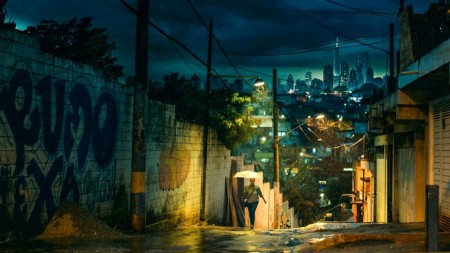
Lesbian love and lycanthropic childbirth in São Paulo
Well, this is a humdinger, and on top of being a lesbian vampire-werewolf movie with social overtones, eye-candy Brazilian mise-en-scene and São Paulo locations, it wants to be a musical, and probably would make a darn good full-fledged one, given half a chance.
The movie, arguably a little long, is in two self-sufficient parts, before and after the childbirth, which is the first big scene-stealing special effects display, to be followed by plenty more.
The story initially explores the unexpectedly intimate relationship across race and class that develops between the rich white pregnant socialite from the country Ana (Marjorie Estiano), whose unplanned pregnancy and refusal to lose it has exiled her from her family in a spacious (and festively decorated) condo in the center of São Paulo, and Clara (Isabél Zuaa) the handsome, cropped-haired black woman, trained as a nurse, but with an uncertain past, whom she hires as a nanny and housemaid. As the two women grow closer, their rapport turns first affectionate and intimate, then sexual, then more fraught and complicated, and in the end shockingly macabre.
It's hard to know where to begin, and this movie, blending art house and genre features in a very sui generis manner, is too good to want to spoil it by revealing many details. The first thing that charms, aside from the two attractive ladies and their somehow inevitable sympathy, is how great things look. Ana's condo is decorated in an understatedly fantastic manner. Outside, the big modern buildings of São Paulo glow deliciously. Then there is the glow of the night skies, and the great big moons. Dutra and Rojas are not into drabness. Everything is a visual delight.
I don't think we've ever gotten sympathetically close to a young boy who's a werewolf before, so you get concerned about him. This no doubt is why Neil Young, of Hollywood Reporter,* writing from Locarno, said this movie's "most obvious antecedent" is "Tomas Alfredson's 2008 Swedish kiddie-vampire smash Let the Right One In." As Joel, Miguel Lobo is a sweet, delicate kid, whose fur pelt that time of the month seems an embarrassment. There is another key support character in Clara's harmonium playing, singing landlady Dona Amélia (Cida Moreira). Everything here seems unique and inevitable, including the dedicated songs, some of them duets. You kind of want to see this again - soon - and with friends.
Young thinks this needed to be trimmed truly to compete with Alfredson's film. And Good Manners indeed has structural complications, maybe irreparable ones. But it doesn't matter. It's still original and a delight.
Good Manners/As Boas Maneiras, 135 mins., debuted at Locarno, and was included in an unusually large number of festivals - over forty. Screened for this review as part of the MoMA-Film Society of Lincoln Center 2018 New Directors/New Films series, It is a Distrib Films US release.
ND/NF showtimes:
Thursday, April 5, 8:30pm [MoMA]
Friday, April 6, 8:45pm [FSLC]
_______
*Jay Weissberg gives a fuller account of the film in Variety.
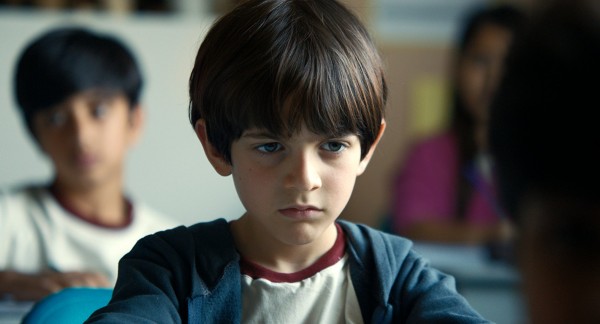
MIGUEL LOBO
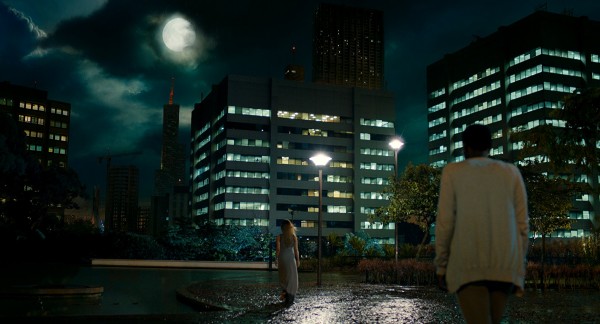
Last edited by Chris Knipp; 04-28-2018 at 10:39 PM.
-
NOTES ON AN APPEARANCE (Ricky D'Ambrose 2018)
RICKY D'AMBROSE: NOTES ON AN APPEARANCE (2018)
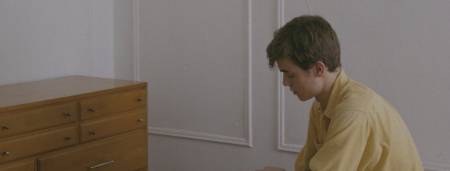
BINGHAM BRYANT IN NOTES ON AN APPEARANCE
Gone boy
Ricky D'Ambrise, who wrote and directed this short feature, is evidently part of a little group of young people in Brooklyn involved in making literate, talky, low-keyed films which flirt with themes of mystery and the occult. We note the common thread among others of Bingham Bryant, who co-directed For the Plasma a couple of years ago and plays the young man, David, who disappears in this one. Bryant also produced a 2016 film about two Argentinians in New York called Dear Renzo. There are links with Alex Ross Perry, and the credits cite a number of New York film critics, as well as Film Society of Lincoln Center programmer Dennis Lim, who chose the present film for inclusion in the New Directors series that gives it its debut. New York movie writer Glenn Kenny plays a minor role as a morgue assistant.
Notes on an Appearance is more about the disappearance of a young unemployed man from Chappaqua, NY, called David (Bryant), who at one point was in Milan and sent some postcards from there. There is some old footage. There are many shots of tables with snacks or breakfast. Given that this is a film by and about young people, and caffeine has never been in higher regard with this demographic, coffee is a constant item in these shots. There are also shots of diary entries by David, as well as his cards, and rather arcane references to a controversial political theorist called Stephen Taubes, an elaborate creation of this film, whom David has been hired to gather research on for a biography of Taubes by David's friend Todd (Keith Poulson), who has a fellowship that allows him to work on it full time.
Taubes is made to seem more real than David, with severalTimes news articles about him shown, a photograph, and an obituary, and even an article about him by Louis Menand in The New Yorker. And there is a dryly staged meeting of three young literary critics before a small audience. D'Ambrose likes to create or recreate his world at one remove. Taubes' reputation and influence after his demise is nearly as important as the physical disappearance of David.
The invented documents are "paper" rather than electronic, ostensibly because one of the characters most concerned by the disappearance is a doctoral candidate who's an archivist, gathering material for somebody else who is writing a biography of Taubes. But it's also true that "paper documents" probably have a quaint and appealing historical flavor for twenty-somethings weary of their own tiresome Internet- and device-driven generation. D'Ambrose recognizes there's something more genteel and pleasant, perhaps, about a world free of smartphones and such, even though this film's world is the present.
The characters speak in little scenes of dialogue shot up close with blank backgrounds. The action is seen as being an arcane "search" for the missing David, but the process lacks urgency, and the solution to the mystery doesn't come through the young clique's efforts.
This is a "minimalist" film, its spare style making a virtue of the necessity of a very low budget. It's an exercise in style, with something a little European about it, a hint of W. G. Sebald, perhaps; something intellectual, something that avoids the visceral or genre or emotional, with its dry invented worlds of a vanished young man and invented public figure. There is a delicate aesthetic, with the academy ratio images in pale colors and a little fuzzy at times. Greg Cwik of Slant notes that this film falters when it comes to the disapparance of David. Despite his use of a haunting, broody soundtrack, D'Ambrose's approach is too meditative and too far from basic genre techniques to generate tension. What he's best at (as Cwik says) is playing thoughtfully, unhurriedly, with locations and objects. Sometimes, though, this film seems to be grasping for an elegance and complexity of style D'Ambrose, despite reportedly some very interesting shorts under his belt, still lacks the means or the chops to achieve. Notes on an Appearance is valuable for what it seeks to be rather than for what it is.
Notes on an Appearance, 60 mins., showed in the Forum section at Berlin Feb. 2018 and also in the Spirit of Fire Film Festival in Russia. It was screened for this review as part of the MoMA-Film Society of Lincoln Center 2018 New Directors/New Films series, its North American premiere.
ND/NF showtimes:
Friday, April 6, 6:30pm [FSLC]
Saturday, April 7, 6:30pm [MoMA]
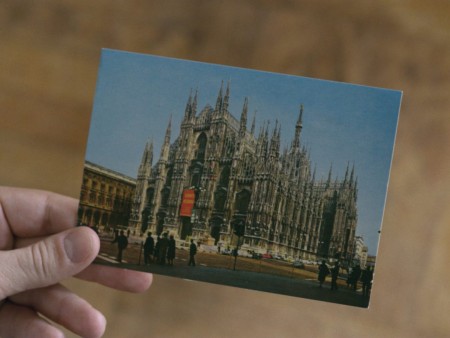
Last edited by Chris Knipp; 02-24-2019 at 01:19 PM.
-
THOSE WHO ARE FINE (Cyril Schäublin 2017)
CYRIL SCHÄUBLIN: THOSE WHO ARE FINE/DENE WOS GUET GEIT (2017)
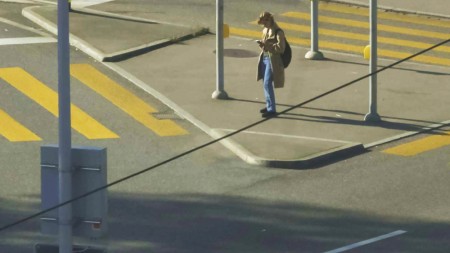
A chilly world of security, and scams on the elderly
The Swiss don't normally make movies. This is a cold gray one, but it has a central theme that's human. It casts a light on despicable scams on older people, robbed of money. Two central sequences, all set in Zurich, focus on a young woman employed at a call center selling insurance or Internet service by day who uses her phone skills in her own time to bilk old ladies, claiming to be their granddaughter in desperate need of quick cash. Then she comes to collect it in a park pretending to be the relative's friend acting in her stead. The first time she succeeds. The second she has been tracked by police working with the old lady, and they take her away.
But in between is a lot of dry footage of security guards, and such, and a man acting as the gatekeeper to a bank, the other to an insurance company. And the call center, of course, and all this talk we hear is boring and borderline nonsensical. That's the point, I guess: to hint, partly, at the sheer alienation of modern life, but also at how many of the everyday details of money and identity and corporate gatekeeping are wearying numerical garbage everybody has to negotiate.
The spirit of Michael Haneke hovers over this short feature, but it hasn't the resonance or depth of characterization of his work; though its chilly style is accomplished and unified, it seems more like a needlessly, if skillfully, expanded short.
Which it may be. The 34-year-old Schäublin, his bio says, studied Mandarin and Film at the Beijing Central Drama Academy, which sounds pretty brave, and then attended the German Film and Television Academy Berlin (DFFB). Last year he and Silvan Hillmann founded the production company Seeland Filmproduktion GmbH. This first feature is an accomplished and promising one, if it seems somewhat in search of a unified shape. In Swiss German dialect. Jessica Kiang in her Variety review calls this a "clinically intelligent, laceratingly pessimistic feature debut."
Those Who Are Fine/Dene wos guet geit, 71 mins., debuted at Locarno Aug. 2017, receiving Special Mention from the Jury. Screened for this review as part of the MoMA-Film Society of Lincoln Center 2018 New Directors/New Film series.
ND/NF showtimes:
Thursday, April 5, 9:00pm [FSLC]
Saturday, April 7, 1:45pm [MoMA]
Last edited by Chris Knipp; 03-21-2018 at 05:36 PM.
-
THE NOTHING FACTORY (Pedro Pinho 2017)
PEDRO PINHO: THE NOTHING FACTORY/A FÁBRICA DE NADA (2017
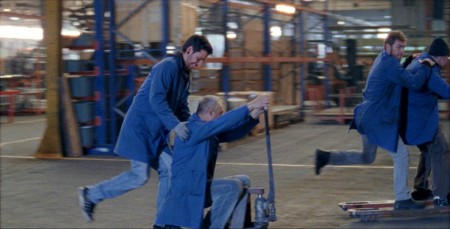
Labor dispute at an elevator factory outside Lisbon comes to life - almost
Portuguese documentary filmmaker Pedro Pinho's three-hour feature - with musical numbers toward the end - might be the most interesting failure of the year. Though it's won festival prizes, regular audiences won't have the patience for it, nor should they, because it's an experiment that's overong, its handling of issues of capitalism and collective factory ownership still left nebulous even after endless discussion.
But the topics get a chance to breathe, and then some, and given their complexity and importance, that's a good thing. Ultimately how this movie was made and why are more significant than the unwieldy result. You could build a film course around it: you'd just need to make clear to your students that this isn't an example of a good film, just one that's fruitful to study and compare with cinephile favorites like Ken Loach and Miguel Gomez, Loach being germane for the worker-centric social realism, Gomez for the documentary-fiction element and focus on Portugal's economic crisis. And this reps a rare example of a neorealist musical - at the end, that is, mixture of genres being another useful subject for film study.
Pinho bases his story (the title drawn from the play De Nietsfabriek by Dutch writer Judith Herzberg) on the Fateleva (Otis) elevator factory in Portugal, which was actually taken over by the workers and run collectively from 1975 to 2016. He uses actual workers, rather than professional actors. But in his version, the worker takeover begins in the present time. The owners try to seize the assets, and the workers block them.
They have no union, as such, but they have solidarity, and a creepy Human Resources lady sent in to try to lure key workers into a buyout of individual jobs fails. Then, the question is how to proceed. They get a lawyer, to deal with the cops. Many heated and lengthy discussions follow.
Much of the film is occupied with debates among the workers, and others, about how to proceed. There is - troublingly, Peter Bradshaw of the Guardian feels, and I'd agree it jars - the occasional self-reflective onscreen appearance of a film director as a character, telling the non-actors how to go, do it again, make it simpler and more basic this time, things like that.
There is a lengthy debate of capitalism and marxist theory re factory takeovers mostly in French, why, we're not told; but that discussion is like plunging into a searching economics seminar that takes as its scope the whole future of human endeavor. It's thought-provoking in a way that a neater scene with tighter dialogue could not be, and it's a key example of how this movie is fascinating and instructive while still unmistakably a dramatic failure.
Most of the actors, though vivid individuals, whose feelings we are given time to feel, don't get depicted in depth. The exception is Ze (José Smith Vargas), his adopted son, nicknamed Mowgli, and his girlfriend Daniele (Daniele Incalcaterra), who's Brazilian. Them we follow home. And they, especially when Mowgli is involved, truly come to life.
But one might compare this to Laurent Cantet's 1999 film Human Resources, about a factory strike in France, in which there's a wrenching, incredibly dramatic and human and specific conflict that develops between a working class father and his educated son who's just joined management staff. Pinho is too wound up in the improvised general debates to think of developing the ideological and practical conflicts in terms of individual personalities.
Here is a proposal: the natural perceived length of a movie is an hour and a half to two hours. If you make one that's longer, a sense of protracted time will be produced in the viewers. In this case, the three-hour length and the series of long drawn-out discussions among the workers has the effect of making the action seem real-time. But that effect becomes unwieldy, because you can't convey the series of steps required for a worker takeover of a factory in lengthy real-time segments. Hence Pinho's Nothing Factory, though absorbing for long stretches, ultimately gets bogged down and goes nowhere - except into song.
The Nothing Factory/A Fábrica de Nada, 177 mins., debuted at Cannes MAY 2017 and won the FIPRESCI Prize; at about 20 other festivals including Munich, Toronto, Vienna, and Busan. Screened as part of MoMA and the Film Society of Lincoln Center's New Directors/New Films series for 2018.
ND/NF showtimes:
Saturday, April 7, 2:00pm [FSLC]
Sunday, April 8, 4:30pm [MoMA]
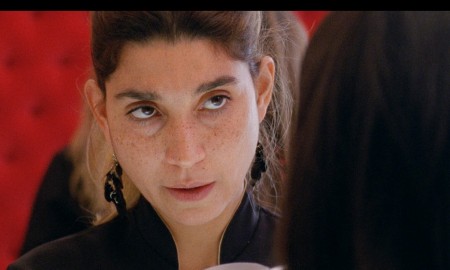
Last edited by Chris Knipp; 03-21-2018 at 10:20 PM.
-
HALE COUNTY THIS MORNING, THIS EVENING (RaMell Ross 2018)
RAMELL ROSS: HALE COUNTY THIS MORNING, THIS EVENING (2018)

Vivid snapshots, kinetic energy
RaMell Ross has made a revealing and intimate short documentary feature about people he lived with and observed in Hale County, Alabama, where Walker Evans and James Agee made their book about white dust bowl poverty at the end of the Thirties, Let Us Now Praise Famous Men. This is a vastly different world, first of all because those Ross observes in his film are African American and well fed. He came to teach photography and coach basketball, a title tells us. He observed with his video camera for five years. He identifies half a dozen people, teens or young adults. They work in a catfish factory, raise a family, play basketball or football, learn to walk, die of infant sudden death syndrome, worship and sing, go to college. There is a world here, and Ross' camera is nimble, his editing rapid and surprising. Is this a "new cinematic language" as Bilge Eberi wrote in the Voice? I don't think so. It's just a new personality, a new camera eye.
Certainly the intimacy, the confidence acquired, impress us, and the kinetic and frenetic events, such as Daniel, a young college basketball player practicing his outside shot over and over with the camera so tight up on him we see only arms and shoulders. Also memorable and troubling, a tiny girl walking back and forth for minutes rapidly in a small room like a caged animal, or a hyperactive child. A remarkable sustained shot with the camera still shows a whole basketball team in uniform in a staging area moving, working off each other, flopping around, their long young bodies partly like one body, yet each an individual.
As with many new films presented as documentaries, this one poses the problem of limits. Ross tells both too little and too much. His "fractured" editing, as Eberi calls it, despite identifying of some people, blocks narrative expectations, echoes a contemporary world of short attention spans and constant interruptions. It finally made sense to me as the work of a still photographer turning to the motion picture. While often the motion is the point, observed with fascination, it is also beside the point. Because if you freeze the frames, the connected subjects, without narrative logic, make pictures at an exhibition by a keen observer who loves and knows his subjects. His editing follows shock logic or poetic logic. But he does not chronicle and inform us as a documentary filmmaker does, closely following lives, providing extensive details. As intimate as Hale County This Morning is, it tells only so much, and the larger story of these lives and their place in the fraught world of African Americans today is left untold.
Hale County This Morning, This Evening, 76 mins., debuted at Sundance Jan. 2018. It was screened for this review as part of the MoMA-Film Society of Lincoln Center 2018 New Directors/New Films, where it was the New York Premiere and Closing Night film.
ND/NF showtimes
Saturday, April 7, 8:30pm [FSLC]
Sunday, April 8, 2:00pm [MoMA]

Photo by Walker Evans from James Agee's Let US Now Praise Famous Men
Last edited by Chris Knipp; 09-20-2018 at 12:50 PM.
-
OUR HOUSE/WATASHITATCHI NO IE (Yui Kiyohara 2017)
YUJI KIYOHARA: OUR HOUSE/WATASHITACHI NO IE (2017)
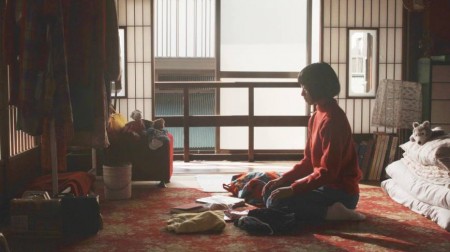
Multiple occupancy
It's hardly a surprise to know the young Yuji Kiyohara, whose feature film debut this is, studied under Kiyoshi Kurosawa. This is a variation on his own varied and very prolific work, which so often plays with families, ghosts, and haunting mysteries. Kiyohara's movie is subtle and haunting. It doesn't quite work but neither do some of her master's. The subject is an original one: a house, in which two different sets of women are simultaneously living, unaware of each other. This can only be happening of some of them are not really there. Ghosts.
At first Our House will read just as a story that's garbled or confusing. What am I missing? you ask yourself. Have I misidentified the characters? One reason for this is that Kiyohara's tale is more bland and understated than her master's would likely be. Both sets of characters seem ordinary and matter-of-fact. As Japan Times' regular reviewer Mark Shilling points out, this seems like "timidity," and seems "reluctant (or unable) to deliver the scares of a good genre exercise," which would strike a commercial producer as faults. But, he adds, this is her intention.
Moreover, as Shilling also notes, she seems to be "channeling Yasujiro Ozu as well as Kurosawa." Indeed, the camera angles, and the use of a traditional Japanese house, strongly evoke Ozu. The first couple of characters are Kiriko (Yukiko Yasuno), and her 13-year-old daughter, Seri (Nodoka Kawanishi), who are cheerful and ordinary. The second, parallel inhabitants eventually, are strange and lonely. Toko (Mei Fujiwara) meets Sana (Mariwo Osawa) on a ferryboat when Sana has woken up with amnesia, remembering her own name but nothing about herself. Toko takes her home (to the house we've seen Kiriko and Deri occupying). Sana, who initially is made up to look pale and ghostly, is the tip-off that weirdness, however restrained, is afoot. There are a few interplays between the two sets of occupants, as well as a man who flirts with Sana in a cafe and causes much confusion and doubt when he shows up at the house.
Our House is a promising effort, and Kiyohara shows conviction and already refined technique, knowledge and respect for Japanese cinematic traditions. But, as hinted by the minimal running time, it feels slight. It needs some kind of payoff, some more flare and energy in the writing to make more powerful, even if chiefly meditative, use of this material.
Our House/ わたしたちの家 /(Watashitachi no ie), 80 mins., debuted at the PIA Festival Sept. 2017, also showing at Tokyo, Belin (Forum), and Hong Kong. It was screened for this review as part of New Directors/New Films 2018.
ND/NF showtimes:
Friday, April 6, 8:30pm [MoMA]
Sunday, April 8, 3:30pm [FSLC]
Last edited by Chris Knipp; 03-23-2018 at 07:40 PM.
 Posting Permissions
Posting Permissions
- You may not post new threads
- You may not post replies
- You may not post attachments
- You may not edit your posts
-
Forum Rules






 Reply With Quote
Reply With Quote











Bookmarks